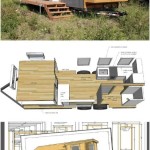Essential Aspects of Duck Housing Plans: A Comprehensive Guide
Proper housing is crucial for the health and well-being of ducks. A well-designed and constructed duck house provides shelter, protection from the elements, and a safe place for laying eggs. This guide presents the essential aspects of duck housing plans to ensure the comfort and productivity of your feathered friends.
1. Size and Space Requirements
The size of the duck house depends on the number of ducks, their size, and the type of housing system. A general rule of thumb is to provide approximately 4-6 square feet of floor space per duck. The house should also have a minimum of 18-24 inches of vertical space to allow the ducks to stand upright without hitting their heads.
2. Ventilation and Airflow
Proper ventilation is vital to prevent humidity buildup, which can lead to respiratory problems and other health issues. The duck house should have adequate ventilation openings, such as windows, vents, or a ridge cap. Ensure that the openings are positioned to provide cross-ventilation without creating drafts.
3. Insulation and Temperature
Insulation is essential to maintain a comfortable temperature inside the duck house. Ducks are prone to cold stress, and extreme temperatures can be detrimental to their health. Consider using insulating materials such as straw, hay, or foam to line the walls and roof of the house.
4. Nesting Boxes
Nesting boxes provide a private and sheltered area for ducks to lay their eggs. The boxes should be approximately 12-18 inches wide, 12-15 inches high, and deep enough to accommodate the duck's body comfortably. Line the boxes with clean straw or shavings for cushioning.
5. Water and Feeding Area
Ducks require access to fresh water and feed at all times. Position the waterers and feeders in accessible locations within the duck house. Ensure that the waterers are large enough to accommodate all the ducks and maintain a constant supply of clean water. Choose feeders that are designed to prevent feed waste and spillage.
6. Run or Outdoor Access
If possible, provide the ducks with access to an outdoor run or enclosure. This allows them to exercise, forage, and enjoy the fresh air. The run should be fenced in to prevent predators and provide protection from the elements. Include features such as a pond or swimming area if space allows.
7. Coop Cleaning and Maintenance
Regular cleaning is essential to maintain the health of the ducks and the cleanliness of the duck house. Remove waste and soiled bedding daily, and perform a thorough cleaning of the house at least once a week. Disinfect and treat the house for pests and parasites as needed.
8. Predator Protection
Ducks are vulnerable to predators such as raccoons, foxes, and hawks. Take steps to protect the duck house from these threats. Install hardware cloth or chicken wire around the perimeter of the house and run. Cover any potential entry points and secure the windows and doors.
Conclusion
By following these essential aspects, you can design and construct a duck housing plan that meets the needs of your feathered friends. A well-planned and well-maintained duck house will provide a healthy and comfortable environment, promote their well-being, and maximize their productivity.

37 Free Diy Duck House Coop Plans Ideas That You Can Easily Build Backyard Ducks Ens

10 Duck House Plans You Can Build This Weekend The Poultry Guide Pens

Duck House Roof Plans Howtospecialist How To Build Step By Diy

23 Duck House Plans With Tutorials That You Can Build In A Weekend The Poultry Guide

How To Make A Duck House The Cape Coop

19 Diy Duck House Plans Insteading

37 Free Diy Duck House Coop Plans Ideas That You Can Easily Build Backyard Farming Ens

Need Duck Coop Ideas Come Tour Waddle Inn Tyrant Farms

Converting A Dog House For Ducks Fresh Eggs Daily With Lisa Steele

Duck Housing And Coops The Happy En Coop








